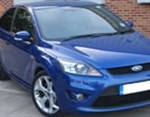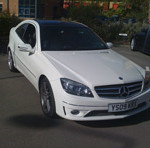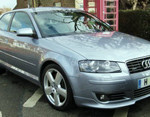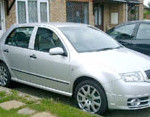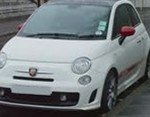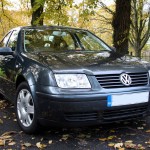Torque & BHP Technical Information
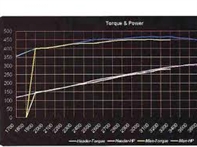 What is all this talk of torque?
What is all this talk of torque?
Torque is the measure of power of a moving (rotating) force applied to an object around its fulcrum (pivotal point).
In a car, ‘torque’ expresses the effort exerted on a shaft to move the vehicle along. When torque is great enough to move a shaft through a given distance in a given time, is ensures that the ‘job’ of moving the car is done: such ‘job’ is expressed as ‘power’ and measured as horsepower.
Eh?
OK, let’s say that you have a centre nut on one of your wheels. You apply a socket attached to a wrench on it, with a 1ft bar (bear with me on the imperial).
The wheel will clearly not move until you put a weight on the end of the bar to try and turn the wheel. Say, you now put 50lb on the end of that 1ft bar and the wheel moves: the twisting force that has moved the wheel from a standstill, at a given speed, is 50 lb ft. So if a car engine produced the same amount of twisting force at its peak, it would be expressed as having a torque of 50lb ft.
Now, take that theory one step further and double the weight on the end of the bar; the wheel would rotate again. Only, this time, because the amount of force pushing the bar down is greater, the wheel would move off quicker and with more ease. Apply this once again to the engine producing the force and it would be expressed as producing a torque of 100lb ft.
Simply put, the more torque you have, the quicker the wheel would move off from stationary.
This is all fine and good on a light car as it means my 0-60mph time will be decreased, right?
Yes, the theory does indeed point to that. However, do bear in mind that if a car produces 100 lb ft of torque and your car does 0-60mph in 10 seconds, it is NOT going to do 0-60mph in 5 seconds if you double the torque to 200 lb ft, due to engine inefficiencies, energy dispersion, transmission sapping up more energy etc.
The acceleration time will, however, be significantly reduced.
What about overtaking?
The same theory applies to overtaking. The more force you can use to make the wheels accelerate from, say, 50mph to 70mph, the less time the car will take to get there.
Why is torque important if I tow a caravan or other inert items?
The more torque is available the more weight can be moved forward from a standstill. Or, in other words, if the wheel you are trying to turn is stiff (i.e. it offers a substantial amount of resistance) it may not turn at all with 50 lb ft – it requires more force to turn it. Therefore, if you need to increase the force by 50lb for the wheel to turn, then the combined torque needed to move the wheel is 100 lb ft. If you apply that principle to a car with a trailer, more force is required to propel that whole unit (car and trailer) forward, because more ‘mass’ (inert material) is at stake. ‘Inertia’ is a bad word in acceleration terms. So, with more torque you can move your car and trailer off from a standstill quicker and with less effort than you could with less torque at your disposal.
What about wheel spin?
More torque means – as we have ascertained – that wheels (and car above) will move more quickly from a stationary position. When this happens, the wheels can spin before the vehicle has chance to move, with consequent energy loss and delay in starting to move. One would be well advised to alter one’s driving accordingly if the torque has been increased, but feeding on the power slowly and progressively.
OK before I nod off, how is torque calculated?
The theory (oh no – not that word again!) is that torque has nothing to do with engine speed (revolutions per minute, or RPM). The torque figures depend on the mean effective pressure in the cylinders (MEP), which is calculated by taking away the total of the average pressures on the induction, compression and exhaust strokes from the average pressure on the expansion strokes. That’s the theory…..
In reality the MEP (you should have read the previous paragraph) of an engine decreases at high speed and the torque drops off.
So the MEP is calculated from the Brake Horse Power (BHP) figures for an the engine, taking into account engine efficiency, so now the MEP becomes the Brake Mean Effective Pressure or BMEP, which is measured in lb in sq!
Phew – that was easy.
What is "Horsepower" or HP?
Let’s start at the dawn of time – or at least the beginning of mechanical devices. Any “engine” was obviously going to be compared to the ability of the (then) main power sources to do labour – horses, men and oxen. As most of the devices were used to drive industrial equipment, the natural comparison was therefore the 2/1 favourite at Ascot.
So, even the pioneers at the time realised that marketing of the new-fangled machin’ry was important, so they likened the power of their devices to a certain number of horses.
A famous engineer, called Captain Thomas Savoury, reasoned that if it took eight to ten horses to operate a mine pump 24 hours a day (two horse working at a time with the next pair taking over when the last two became tired), then a mechanical device that did the same job in the same time had 10 – 12 ‘hp’.
You can move on through history with this through the likes of James Watt but you are not here for a history lesson.
So what is "brake" Horsepower or BHP?
This is power that has been measured on a ‘brake’ or normally known now as a Dynamometer.
This device provides a load for the engine to “drive” against and then measures the torque produced by the engine, which, if then multiplied by crankshaft revolutions per minute, provides a brake horsepower figure.

